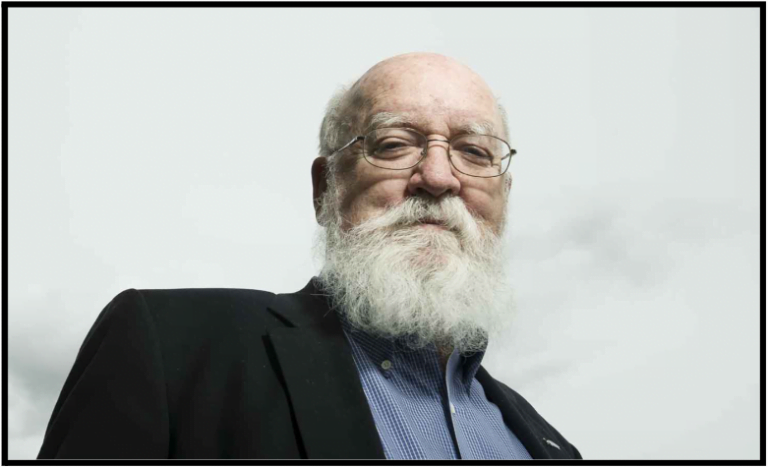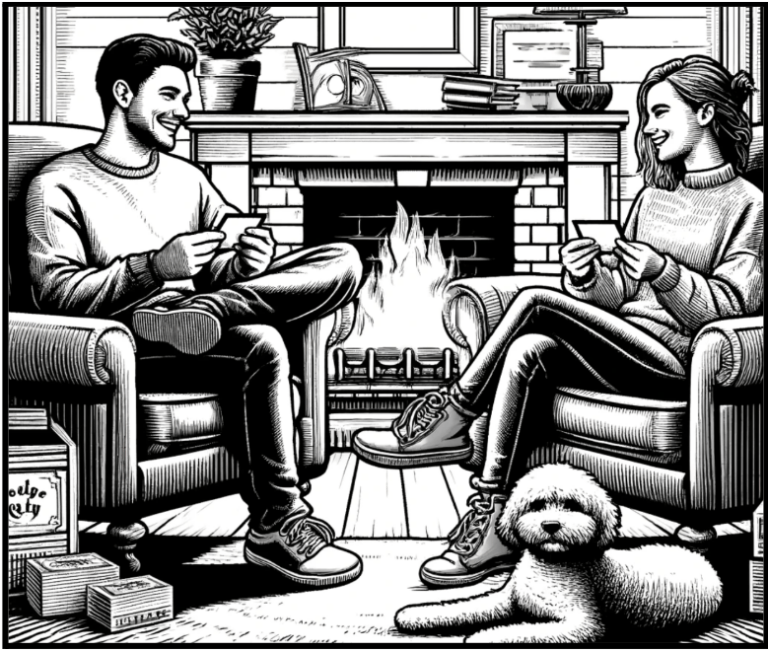How do you talk about your company when someone asks you what you do? Work is a central part of our lives and frequently an early topic of conversation when we meet someone new.
One day, I was driving home from giving a presentation in Durango and stopped off to grab my dry cleaning in preparation for a business trip I was going on.
I walk into the cleaners and tell the woman, “I’m here to pick up.” She eyes me a bit and then walks back to grab my clothes.
As she’s bringing them back, she asks with a slightly mocking tone, “What do you do that you wear such fancy clothes?”
I stutter at first. Who expects to get a question like that at the dry cleaners?? I end up saying, “I do training and workshops and have to travel, which is why I wear business clothes.”
I’m tripping over myself to justify my choice of outfit in a town known for being the “worst dressed” instead of confidently explaining the important work I do.
Fast forward to several weeks later. I gave an opening workshop for Startup Week in Durango (wearing jeans this time). The workshop was on how to talk to other people about your business when networking.
Through the course of the 90-minute session, I used my own company as an example:
- You know how a lot of business leaders have excellent ideas and awesome solutions to solve big problems, but they struggle to talk about them in an authentic and compelling way?
- I coach leaders and executives to talk about their ideas in a way that’s clear, connects to their key audiences, and builds their confidence.
- For example, today, I’m leading a workshop with entrepreneurs all across the western slope of Colorado to help them talk about their businesses while at Startup Week.
A couple of weeks later, a local woman, Melissa, reached out because she was giving a keynote in a month. She hadn’t seen my talk, but a friend had attended and recommended me to her. Melissa is now a client.
Consider the difference in outcomes between the dry cleaner and the workshop. In one, I don’t know how to respond and shrink back. In the other, I’m confident and clear, and it leads to a closed business deal.
Note, that in the success story, it’s not the person who heard my explanation who became a new client. But that person passed my story along to someone else who was interested.
This is the goal. Empower other people to take what you say and share it. Enable them to “forward” your message to their friends and family. Like a chain email from the 1990s.
The better your response to explaining your organization, the better you’ll represent and build, your company’s and your own brand. And you never know what may come of it.
Know your audience
Before you start to craft your explainer, mentally put yourself in a context where you might use it.
As with any speaking, tailor your response to the person you’re talking to. What you tell your mom might be different from what you tell a new connection at a networking event.
Exercise: Write down 3-5 times that you had to explain what you or your company does. Think back to conferences you’ve attended, family dinners, networking events, etc. Note the context, who you were talking to, and how you responded.
Once you have a couple of people in mind, consider these three questions:
- Who are they?
- What are they interested in?
- How can you frame your explanation to connect with them?
Jot down some brief notes to help shape your company explainer.
What you say
In Simon Sinek’s famous TEDx Talk, Start with Why, he points out that most people respond to the “what do you do” question by explaining the specific activities or tasks they execute. Which is about the least interesting part of the work you do.
Instead, Sinek pushes us to connect to the bigger picture of why our work matters.
When you clarify what you want to say, it is much easier to share it when you’re not expecting the question. Like my encounter at the dry cleaner’s.
Below are several templates with examples you can use to develop your own explanation of what you do. All of these can be shared in as little as 30 seconds or turned into a full keynote speech.
At first, aim for a response that’s less than 60 seconds. It’s typically easier to expand than cut, so start with a tight version that you can build on when called to.
Template: Problem → Solution → Example (PSE)
This template is the simplest and a great starting point. Start by articulating the problem your company solves. Then share the solution: what your organization does to solve the problem. And close with a recent example.
- You know how… [problem]
- Well what we do is… [solution]
- For example, just last week… [example]
Ewing School example:
- You know how… a lot of really great ideas don’t seem to get much traction because of how they’re communicated?
- Well… the Ewing School helps leaders talk about their ideas to get other people just as excited about them.
- In fact… just a couple of weeks ago, we helped a leader develop a conference keynote. For the next 3 days, people kept telling him how much they love the work he is doing.
One of our clients, the Foundation for Individual Rights and Expression (FIRE), is a public interest law firm that advocates and litigates to protect free speech and free expression.
Here’s an example of a response someone at FIRE might share:
- You know how… the government sometimes prevents certain types of thinking or ideas from being shared freely?
- Well… FIRE has a team of lawyers that sues the government when it violates people’s free speech.
- For example… we just sued the city of Houston because their police detained animal rights advocates during a peaceful protest.
If your organization is new or still just an idea, you might not have a use case yet to share as an example. In this case, try using the next template and create a hypothetical.
*Dive Deeper: Our article on Problem, Solution, Example*
Template: PSE in a Story
This template comes from Paul Smith, a storytelling and leadership expert. It follows the same basic format as the Problem → Solution → Example template above, but frames it as a story:
- Pick a real or hypothetical character.
- Explain the series of events leading to this person needing your company’s services or product.
- Articulate how your company helped them.
- Highlight the benefits the character received.
Ewing School Example:
- One time there was a really well-respected leader who hated public speaking.
- He had to introduce a keynote at a conference he was organizing. Hundreds of important leaders were going to be there. He was dreading it.
- He asked us for help. During his first run-through, he stared at his shoes and mumbled. We worked together for months leading up to the event, helping him tell his story.
- When he finally gave his remarks, he crushed it. People cried and even offered him jobs. Now, he regularly gives talks about the work he does.
Here’s how our hypothetical FIRE employee might use this template:
- Think of a philosophy professor at a state college.
- What if this professor does research that goes against the leading dogma of the institution? And the college dean cuts the professor’s class load and with it their salary.
- This is the kind of thing that FIRE would jump on. The reduction of class load and income could be retaliation based on their ideas. FIRE would step in to ensure the professor gets their full rights.
- Now, the professor is able to pursue their ideas without fear of being retaliated against. Plus, other professors at the university feel safe to speak their own ideas.
Persuasive Narrative
This is a great template to use when you want to generate buy-in or move your listener to take action.
The key to this template is to start by putting your audience at center stage. Then paint a picture of a vision you both believe in. Followed by articulating what threatens that vision. Enter the solution to resolve that threat. End by clarifying what we need to do to implement the solution, vanquish the threat, and save our vision.
- Audience-focused opening.
- Shared vision.
- Threat.
- Solution.
- Call to action.
Ewing School example:
- Have you ever had an idea that you’re really excited about? But when it came time to tell someone about it, it didn’t go over well.
- Imagine a world where people with great ideas can get others just as excited about those ideas.
- The problem is that we don’t teach idea-makers to frame their ideas to connect with their audiences. And then deliver those ideas in a clear, confident way.
- At the Ewing School, we work with leaders who have Big Ideas to radically improve our world. We coach them to talk about their ideas with clarity and confidence.
- What is one thing you could do today that would improve how you talk about your Big Ideas?
FIRE example:
- Imagine you’re hanging out at a park with friends, chatting ideas. Suddenly, a city official comes up and slaps a piece of tape over your mouth.
- We all want a world where we can say what we think without fear.
- But sometimes what we think doesn’t align with the prevailing orthodoxy. And those in power will take steps to silence you.
- At FIRE, we defend those who have tape slapped over their mouth.
- Protect yourself, your friends, and your community by supporting the work we do.
*Dive Deeper: Our article on The Persuasive Narrative*
Practicing a conversational delivery
When we stand up and speak in front of a group, we want to be polished and commanding. But when we speak with someone one-on-one or in a group setting, we want to sound conversational.
When you get the opportunity to share one of your crafted responses in conversation, aim to maintain a tone and style that’s consistent with how you were talking before. Avoid going into “presentation mode.” It will be disconnective and feel inauthentic.
The challenge is to balance clarifying what you want to say, which we often write down, with a natural delivery.
To overcome this problem, first, write a draft without applying any filters. Then, instead of editing and polishing based on how you would typically write, do so based on how you would typically speak.
Use these rules:
- 15-18 words per sentence.
- <2 words with 3+ syllables.
- Active voice: front-load the subject and verb.
Go back to the template examples shared above. Do they follow these guidelines?
Test out your draft by speaking it to friends or colleagues. Anything that feels unnatural will also sound unnatural. Make a note of where you stumble or forget what you want to say. Get feedback from your listeners on what they remember.
Keep working until it feels totally conversational to slip in one of these templates. Go back and forth between writing and speaking to ensure it’s both clear and natural.
You can also use an app to draft or practice out loud. A tool like Otter.ai will capture what you say and transcribe it in real-time. You can then tweak and edit based on how you talk rather than translating from writing to speaking.
***
Your ability to talk about what you do and who you work for is essential to being a well-rounded communicator.
When you excel at explaining what you do, your message gets carried on the wind of other people’s voices. People “forward” your story to their friends and colleagues. And opportunities will come back to you.





